The Science and Technology Directorate (S&T) collaborated for four years with top scientists at the U.S. Environmental Protection Agency (EPA) and the U.S. Coast Guard (USCG) to ensure first responders and USCG personnel are properly equipped and trained to respond to a variety of biohazard emergencies—from naturally occurring disease outbreaks to an accidental or intentional release of a bioagent. The joint effort, called Analysis for Coastal Operational Resiliency, or AnCOR, included several targeted field assessments over the course of the project studying everything from vessel decontamination to how pathogens are transported by rain.
“The focus of AnCOR is on preparedness and planning to respond to biological-related emergencies,” said S&T Program Manager Dr. Don Bansleben. “We test strategies, methods and technologies for cleaning up as quickly as possible the affected areas so USCG can resume its crucial work safeguarding our coastlines and waterways.”
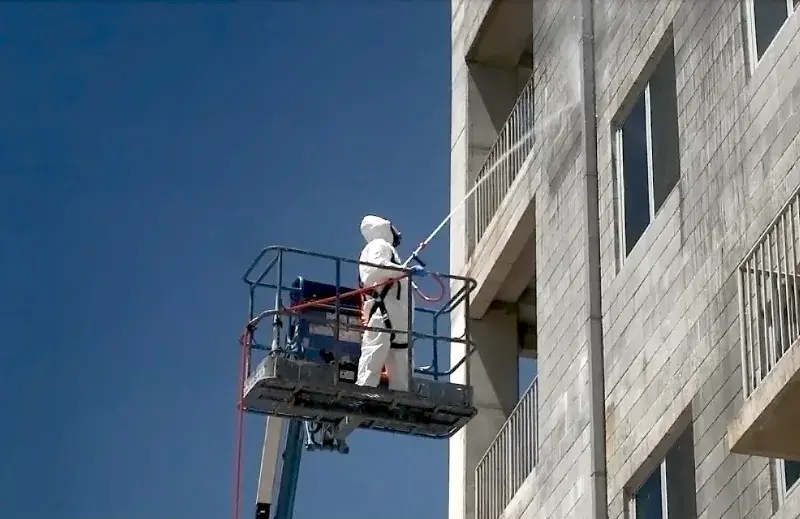
S&T and its partners convened in Virginia throughout May 2022 for the culminating AnCOR Wide Area Demonstration (WAD) event. This outdoor event simulated a response to an anthrax incident and examined lab-tested response procedures to help USCG respond to future biohazard incidents.
The goal of WAD was to field test technologies and methodologies for use by recovery personnel. “Confirming what works in the laboratory also works in the field before an actual incident is critical to saving time and reducing clean-up costs,” said Bansleben. The team followed steps that embodied an actual biological response: inoculation (‘contamination’) of different surfaces with a benign surrogate for the anthrax-causing bacteria; sampling before and after decontamination; data management of the hundreds of samples collected; decontamination of inoculated areas; and waste management of used personal protective equipment and contaminated materials. USCG National Strike Force members participated in pre- and post-decontamination sampling and provided valuable feedback.
“This project and demonstration helped us learn the procedures we'll need to follow and will prepare us to respond to biological incidents involving anthrax and other pathogens,” said USCG industrial hygienist Emile Benard.
The photos below offer a peek at the intricacies of each stage of the AnCOR WAD testing. Findings will be released jointly by S&T and EPA in 2023.
Inoculation
Inoculation, particularly for the purpose of a simulated biological incident like this, means spreading a targeted amount of a microorganism on a surface that will be later decontaminated. For WAD, EPA researchers mixed water with the spores of Bacillus atrophaeus var. globigii, a close but benign relative of the anthrax-causing bacteria and sprayed the mixture on various outdoor surfaces that could be found on a typical USCG base, like concrete, asphalt, wood decks, building facades, gravel, grass and foliage.
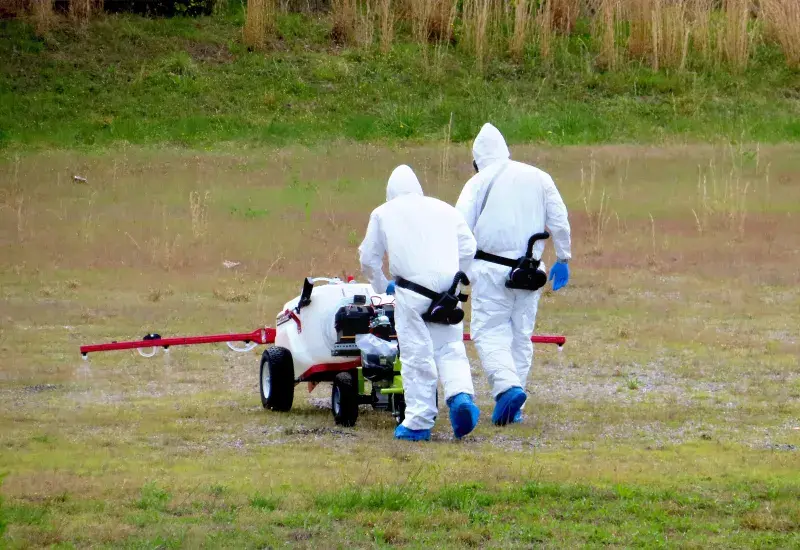
Sampling before and after decontamination
Pre- and post-decontamination sample collection and analysis helps ensure the affected site is successfully decontaminated.
“In order to accurately assess the decontamination performance, we need to know what the difference is before and after decontamination,” said Dr. Worth Calfee, EPA research microbiologist.
The team collected baseline samples from the various surfaces; after contamination, USCG and EPA responders took additional samples and tested the surrounding air for any airborne spores.
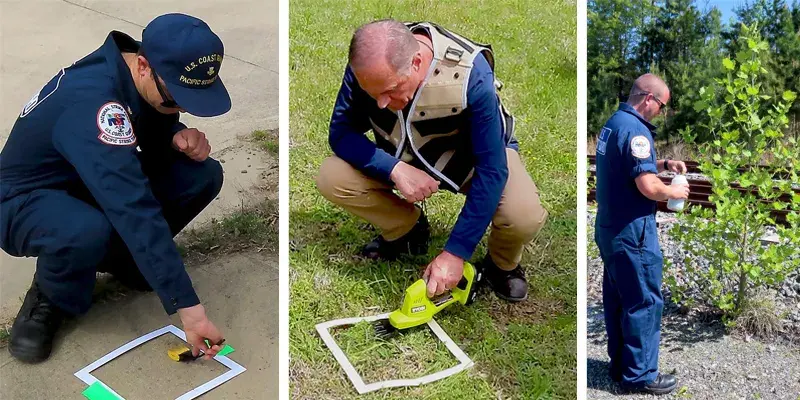
In addition to traditional sampling with sponge-sticks, S&T funded the development of the Activity-Based Aggressive-Air Contained Sampling System (AACeSS), a novel mechanical device that can be used to collect environmental samples over multiple types of surfaces.
“AACeSS is an important advancement for sampling wide areas and reducing the number of samples taken using traditional methods, typically taken from 10-inch by 10-inch square areas,” said Bansleben. “It can potentially speed the process of characterization of a biological agent event—both before and after decontamination—and thus save time and money to analyze and characterize large geographic areas.”
“AACeSS was a solution to the problem for sampling a wide area for bioagents, and we wanted to see if spores could get resuspended off the surface yet contained in the sampler, captured on the filters and analyzed,” said EPA industrial hygienist John Archer, who researches sampling and characterization of bioaerosols and designed AACeSS. “AACeSS gives you a better idea of what could get into the air that you could breathe in.”
Once collected, the samples were sent for analysis to EPA’s Research Triangle Park Microbiology laboratory, laboratories within the Centers for Disease Control and Prevention (CDC), and several Laboratory Response Network member laboratories.
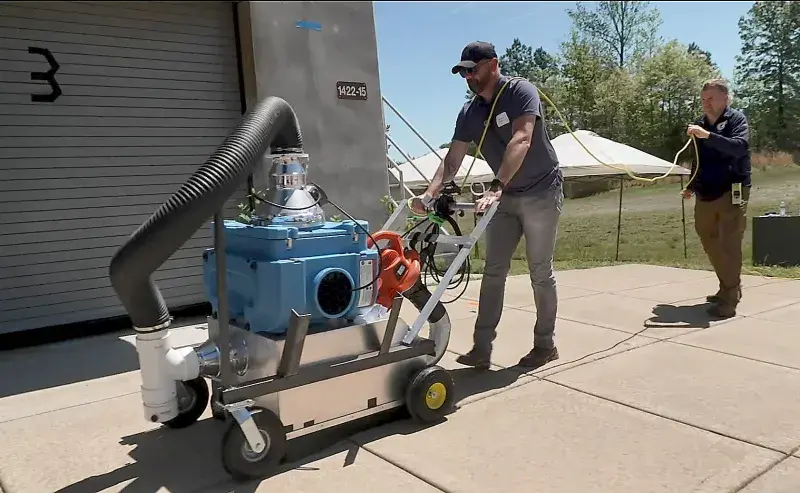
Data management
Because sampling is a critical step of the process that helps inform the proper course of action, keeping track of the hundreds of specimens is key. They are cataloged with additional details such as location, date, time, and sample type.
“To facilitate the sample tracking, data management has helped communicate and document the samples by automating this otherwise very arduous process,” said EPA geographer Timothy Boe. “Interestingly, when you arrive at your sampling location and scan in the barcoded sampling bag, the software marries the bag to that specific location.”
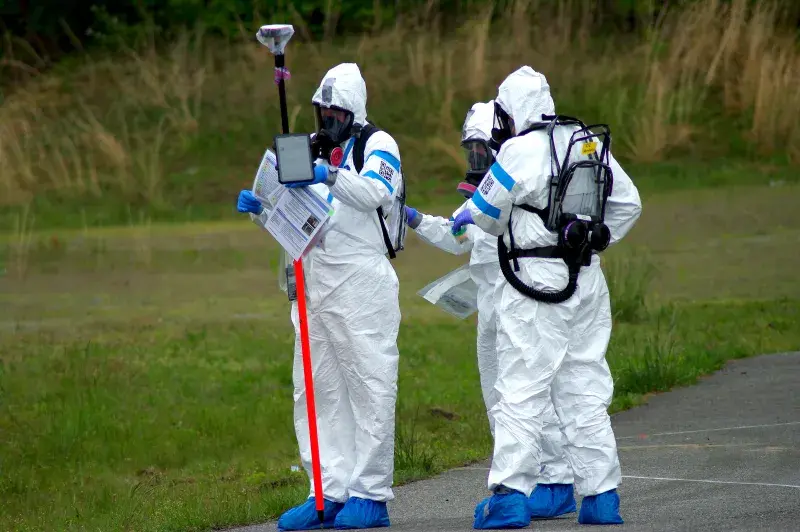
Once all the data are collected and analyzed, the data management team can estimate the extent of contamination using statistical methods that calculate the location and potential movement of contamination. “Statistics can also determine how reliable are the results we've generated,” said Boe.
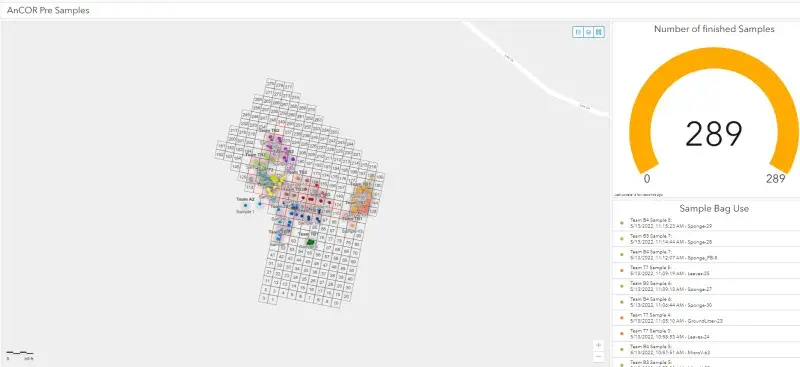
Decontamination
“Without decontamination, the Coast Guard cannot reoccupy and reuse its facilities,” said EPA research physical scientist Dr. Lukas Oudejans. “We have done laboratory studies to determine the chemicals and technologies suitable to decontaminate surfaces and materials found at a Coast Guard station.”
Different surfaces require different types of spraying equipment and decontaminants. For wide areas, various municipal or agricultural equipment could be suitable, like boom sprayers for roads and lawns and pressure sprayers for tall buildings, foliage and trees. For hard surfaces, EPA researchers chose the strong bleaching agent calcium hypochlorite; for vegetation, they selected peroxyacetic acid solution to reduce potential harmful effects to plants as it later degrades into vinegar and water.
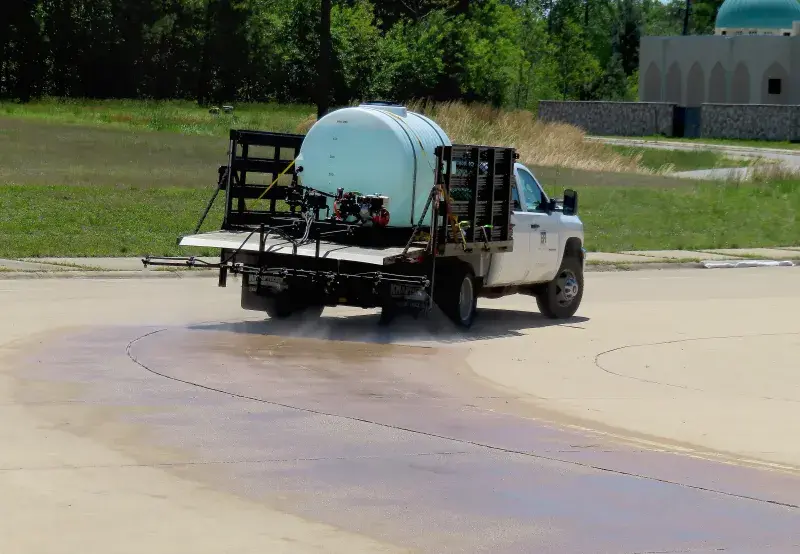

Waste management
As soon as a biohazard incident happens, waste starts piling up, even before first responders come to the scene. “We tested how contaminated materials can be best disinfected and disposed of,” said EPA chemical engineer Dr. Paul Lemieux.
For efficient on-site decontamination of both heavy and buoyant waste, EPA collaborated with North Carolina State University to design waste bags made of innovative semi-permeable, non-woven material that keeps the spores inside the bag while allowing gas and moisture to penetrate contents in the bag.
“You can fumigate bags full of contaminated waste on-site with chlorine dioxide or methyl bromide without opening the bags, because if you open them, you run the risk of contaminating everything including workers not wearing proper protection,” said Lemieux. “Successfully and safely decontaminating waste could be a game-changer for properly disposing of cleaned materials.”
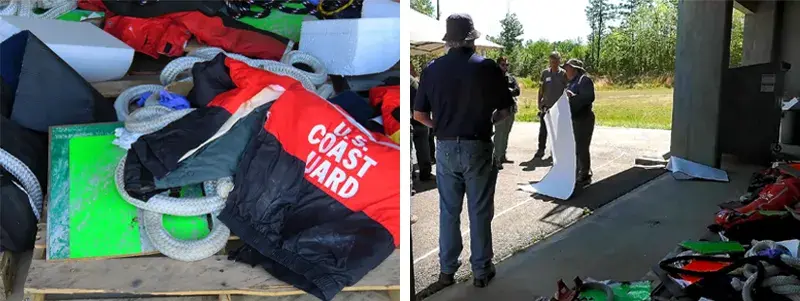
The path forward for AnCOR
“In the long-term, the lessons we learn from AnCOR and WAD would be applicable to most biohazard incidents,” said William Pharis, assistant director of S&T’s Office of Mission and Capability Support, who also attended the May testing. “By working together, we leverage the joint S&T-EPA team’s strengths—resources, program management expertise, scientific and technological expertise, but most importantly passionate and dedicated people.”
“We're very fortunate to have a long-term partnership with S&T,” said Dr. Gregory Sayles, director of EPA’s Center for Environmental Solutions and Emergency Response. “EPA and S&T bring different strengths: S&T prepares the nation for emergencies, and EPA prepares the nation for environmental disasters. Together we’re building strong relationships to respond to emergencies.”
After WAD, S&T and EPA will prepare a procedure manual and maintenance cards that USCG can leverage to return quickly to operational capacity should a real outdoor, urban-area biohazard incident occur.
“We are taking advantage of the capabilities and the experts in different parts of the government to find solutions to very complex problems that the government must solve while wisely using taxpayers’ dollars,” said Bansleben.
For more information, please contact S&T’s Chem-Bio Detection program at CBD_STMCS@hq.dhs.gov. For related media inquiries, please contact STMedia@hq.dhs.gov.
